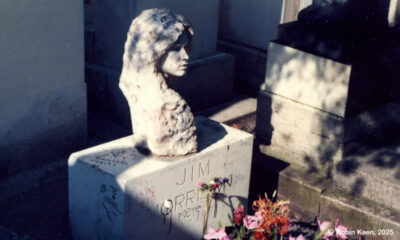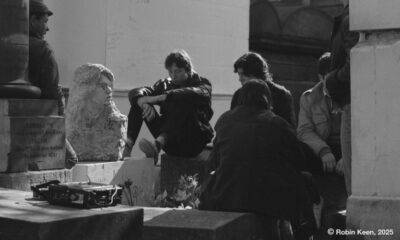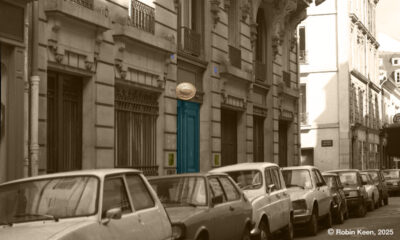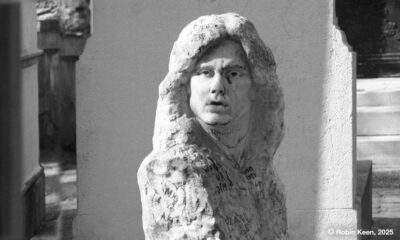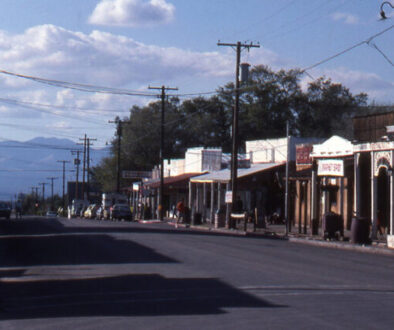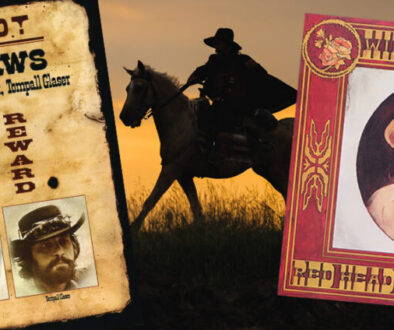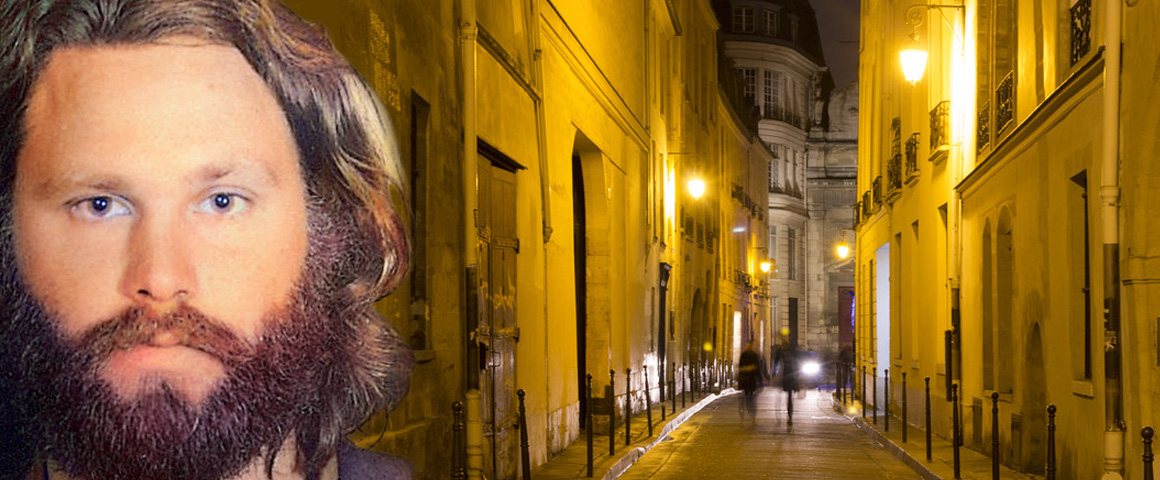
THE DEATH OF SINGER AND OUTLAW POET JIM MORRISON
Jim Morrison arrived in Paris in March 1971, reuniting with his longtime girlfriend, Pamela Courson. Behind him lay a meteoric yet tumultuous rise to rock stardom as the enigmatic, whiskey-driven frontman of The Doors. However, the man who stepped onto the streets of the French capital was a far cry from the leather-clad, charismatic Lizard King who had once mesmerized audiences with hits like Light My Fire and Riders on the Storm. Disillusioned with the music industry and weary from his legal battles—including an unresolved conviction for ‘lewd and lascivious behavior’ following a controversial Miami performance in 1969—Jim sought refuge in the City of Light, hoping to reinvent himself as a poet in the Outlaw tradition of Arthur Rimbaud and François Villon.
A NEW LIFE IN PARIS
Taking up residence in a modest apartment at 17 Rue Beautreillis in the historic Le Marais district, Morrison embraced a quieter, more introspective lifestyle. He spent his days strolling through the boulevards, seeking inspiration from the city’s artistic heritage, and frequenting literary cafés such as Café de Flore and La Coupole—haunts of great thinkers and artists before him. He rekindled friendships with figures like filmmaker Agnès Varda and journalist Hervé Muller, who would later recount their interactions with the reclusive singer. His sojourn in Paris was interspersed with trips to Corsica and Morocco, seemingly in search of further artistic and personal enlightenment.
THE TRAGIC NIGHT OF JULY 3, 1971
In the early hours of July 3, tragedy struck in the apartment on Rue Beautreillis. Accounts suggest that Morrison and Courson spent the previous evening together, with Jim complaining of feeling unwell. At some point, he decided to take a bath, hoping to ease his discomfort. When Pamela discovered him unresponsive in the tub, she frantically called for help. A doctor arrived but swiftly confirmed that Morrison was already deceased.
With no signs of foul play, and at Pamela’s insistence, no autopsy was conducted—an unusual decision that would fuel decades of speculation. The official cause of death was listed as ‘heart failure,’ though this vague determination left more questions than answers. His body was quickly placed in a sealed coffin, with only a handful of people—including Pamela, a physician, first responders, and undertakers—having seen him before his burial.
A QUIET FAREWELL
On July 7, Morrison was laid to rest in Père Lachaise Cemetery, a resting place for literary and artistic luminaries such as Balzac, Bizet, Oscar Wilde, and Édith Piaf. His burial was an understated affair, attended only by a few close friends and Pamela herself. Strangely, the media remained unaware of Morrison’s passing until July 9, nearly a full week after his death. By the time the news broke, speculation had already begun to spread like wildfire.
THE HYACINTH HOUSE
The mysterious circumstances surrounding Morrison’s death—no autopsy, a sealed casket, and a delayed announcement—gave rise to numerous conspiracy theories. Some claim he died of a heroin overdose at the Rock ‘n’ Roll Circus, a notorious nightclub on the Left Bank, and that his body was discreetly transported back to his apartment to avoid police scrutiny.
Other, more colorful theories suggest Morrison never died at all. Echoing his own fascination with reinvention, some fans believe he faked his death to escape fame and live out his days in obscurity. Over the years, alleged sightings of Morrison have surfaced, fueling the myth that the Lizard King simply ‘shed his skin’ and vanished into the shadows. Indeed, he had made just such prophetic references in his songs, like The Hyacinth House and The Changeling
A PLACE OF PILGRIMAGE FOR A FEAST OF FRIENDS
Regardless of the truth, Jim Morrison’s death remains one of rock music’s most enduring mysteries. His grave at Père Lachaise has since become a pilgrimage site for fans worldwide, covered in graffiti, flowers, and messages of tribute. His music, poetry, and the enigma of his final days continue to captivate audiences, ensuring that the legend of Jim Morrison lives on, forever shrouded in mystery.
- JIM MORRISON'S PARIS GRAVE, 1982
- A FEAST OF FRIENDS, 1982
- 17 RUE BEAUTRELLIS, 1982
- THE LONG LOST ORIGINAL BUST, 1982
A PERSONAL RECOLLECTION FROM THE EDITOR
It was a bright February morning in 1982, when our small film crew arrived at Père Lachaise. After trekking through the maze of boulevards that makes up the surreal necropolis, the shrine finally came into view. It was an almost living effigy of Jim, splashed with morning sunlight as it stood huddled among a more ancient collection of grand tombs. The white stone bust had only been there a matter of months, and while a certain amount of fan graffiti had already been added, it was in a relatively immaculate state compared to the grotesque article it would quickly become. Yet an even worse fate was to befall the monument when a few short years later it would be stolen and vanish forever. Due to the early hour, the place was deserted and there was a strange yet welcoming sense of peace and familiarity. A stray cat soon joined us, and after brushing past several of the crew by means of introduction, found its perfect spot in the sun. A short while later, a couple of girls appeared, typical Dutch bohemians, as I recall, bearing flowers, blue hyacinths, which they reverently placed by the monument before settling down nearby in a mood of contemplation. As the morning progressed, more and more people, individuals, couples, with accents that hailed from all corners of the globe, converged around the shrine. Some quietly knelt to place lit candles or incense on the monument, while others simply just found there place. Several bottles of wine appeared, and were freely passed around. One guy pulled an old tape from his backpack, and asked to use our sound recorder… The Crystal Ship is being filled…
